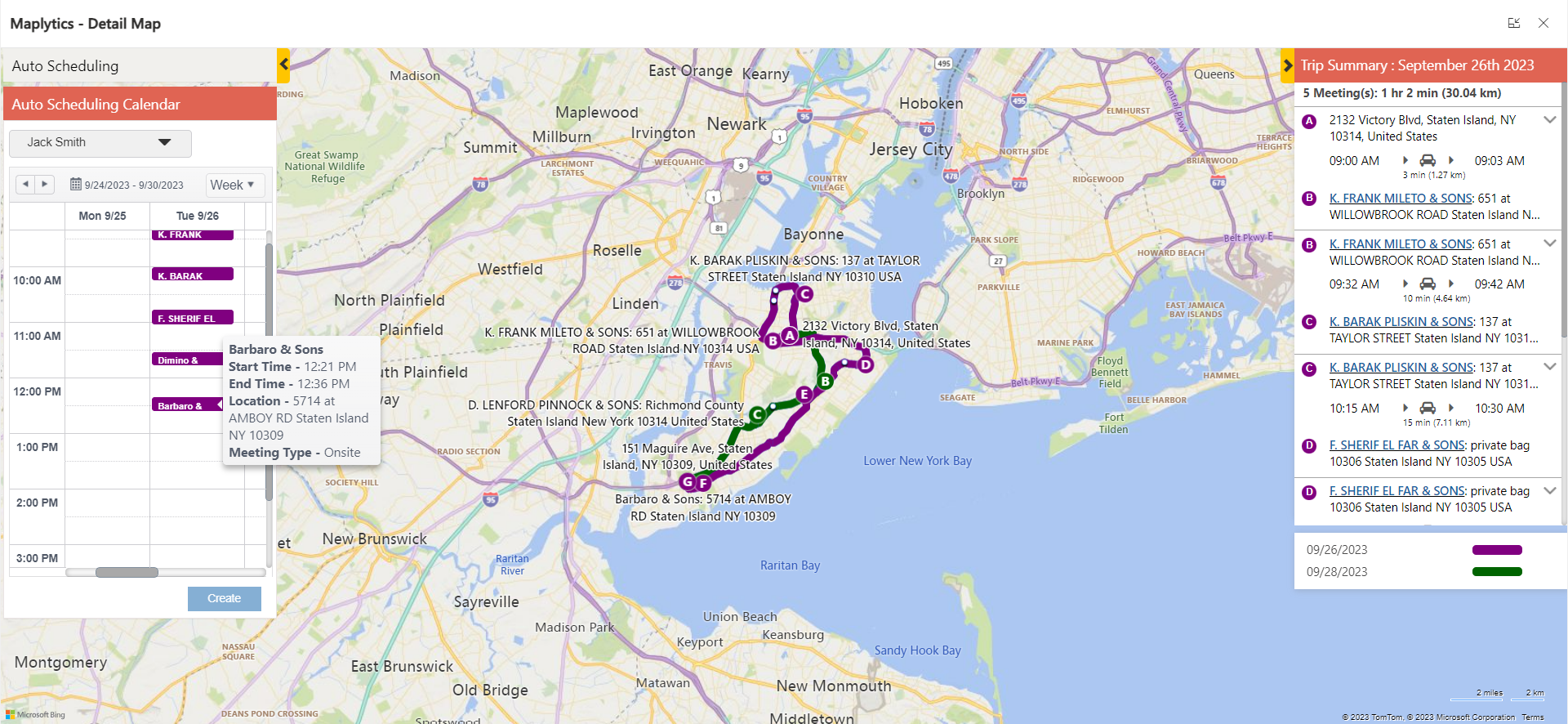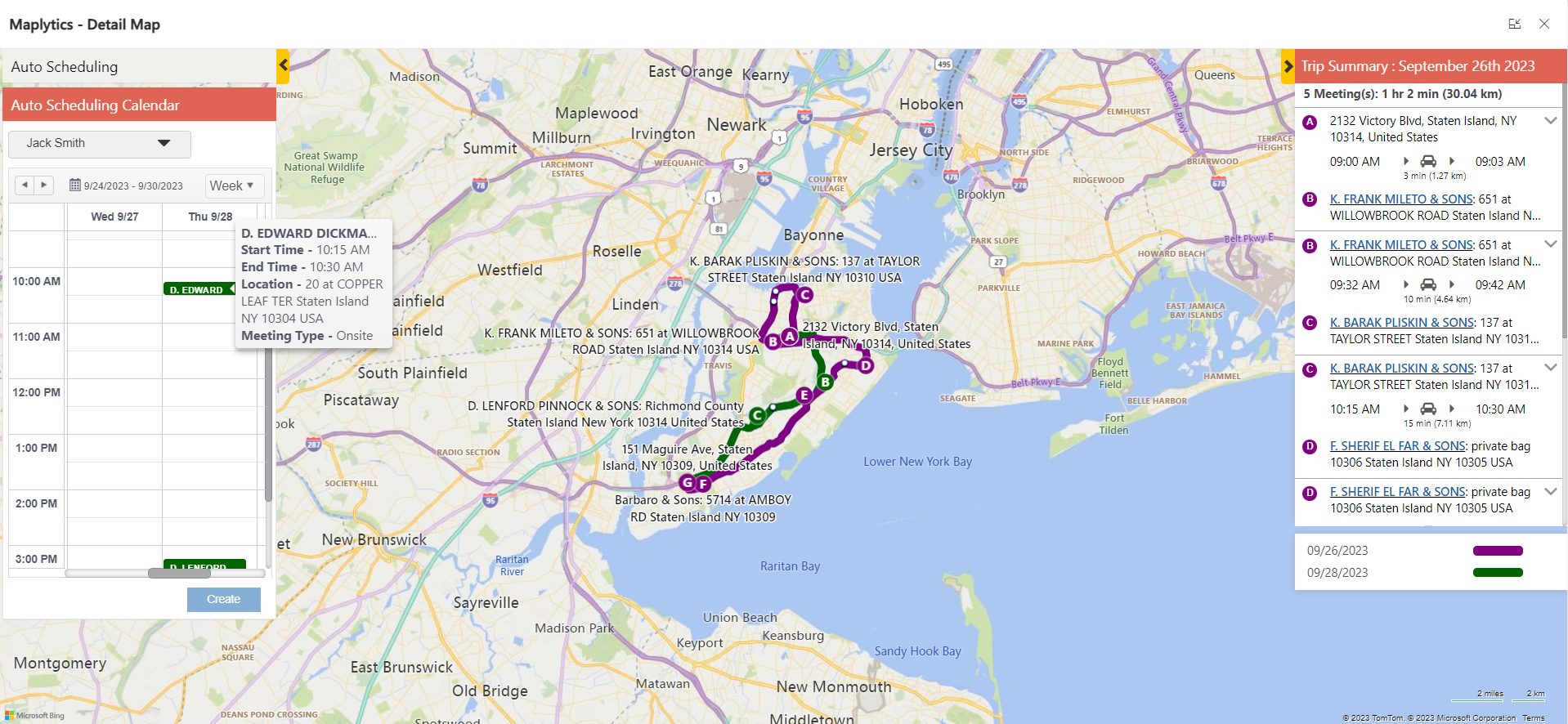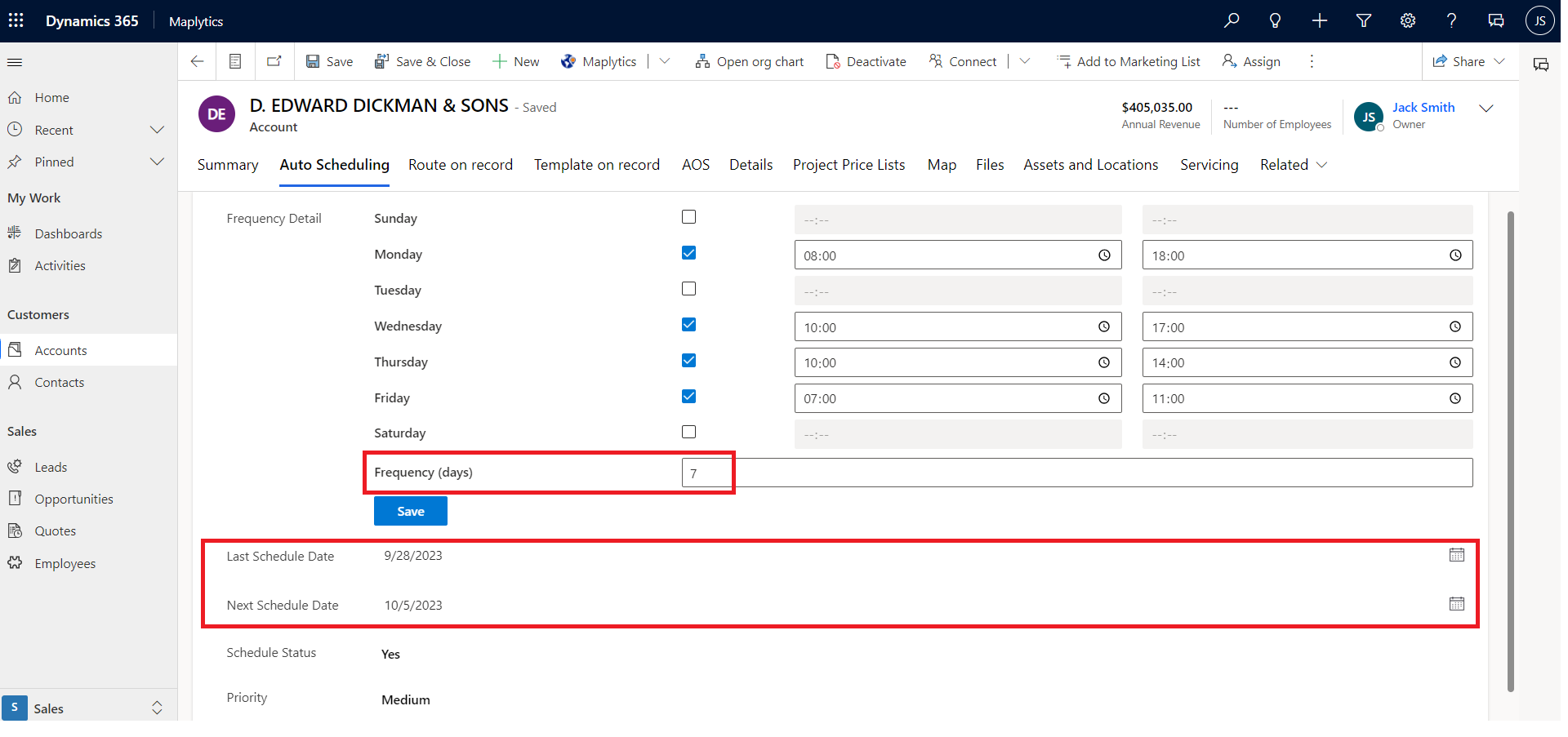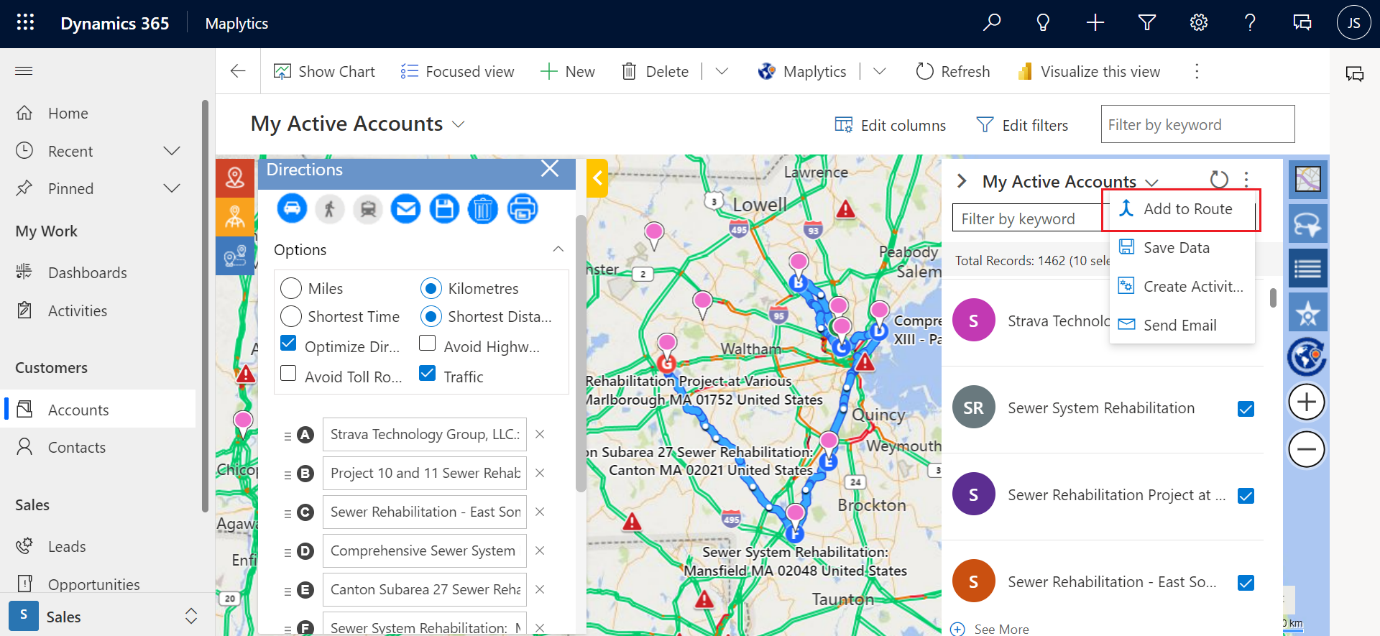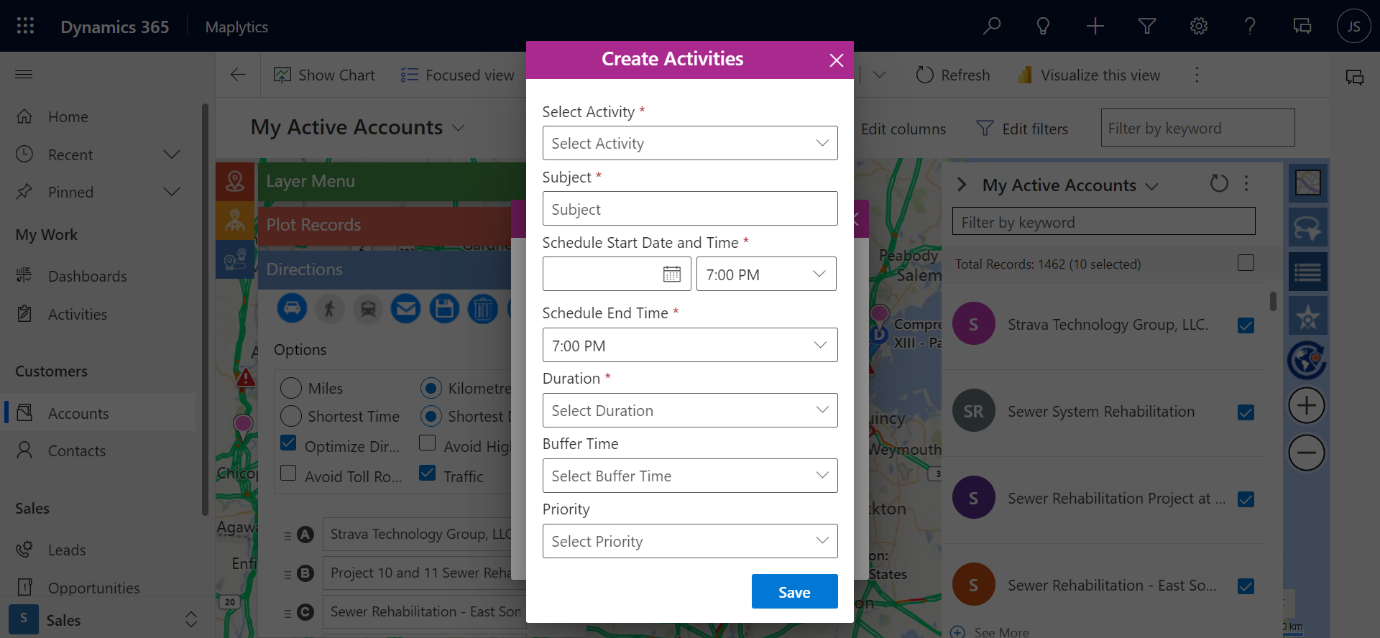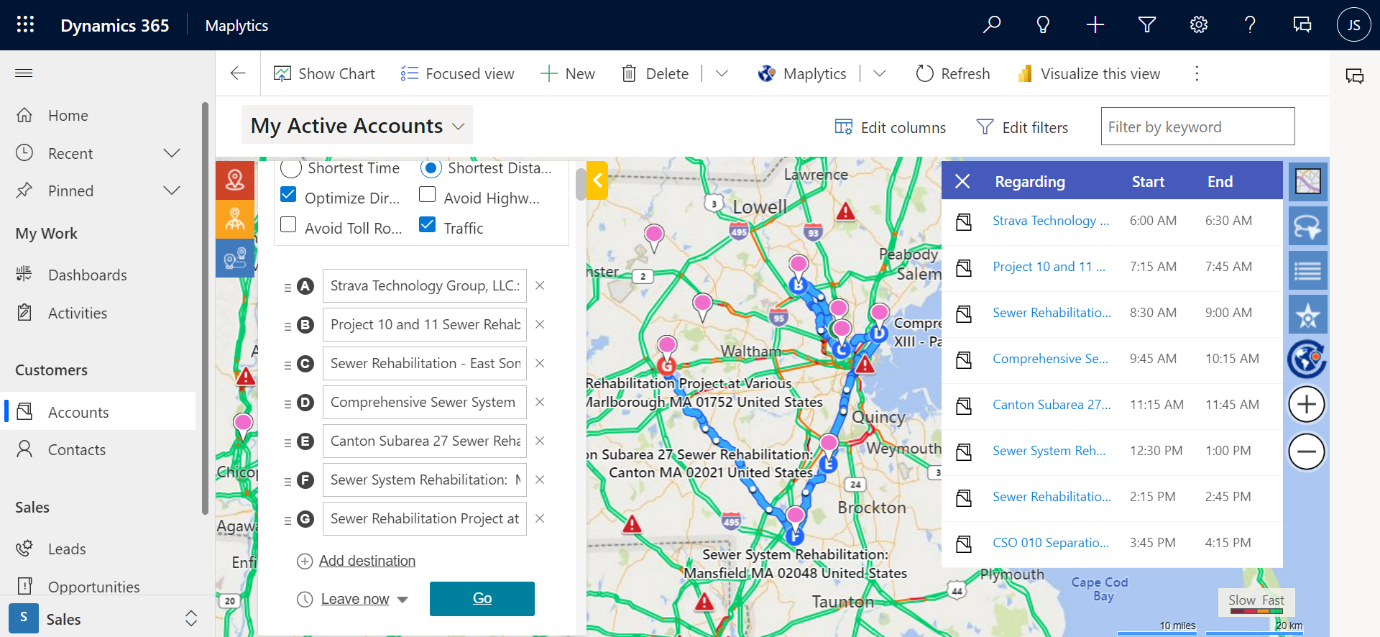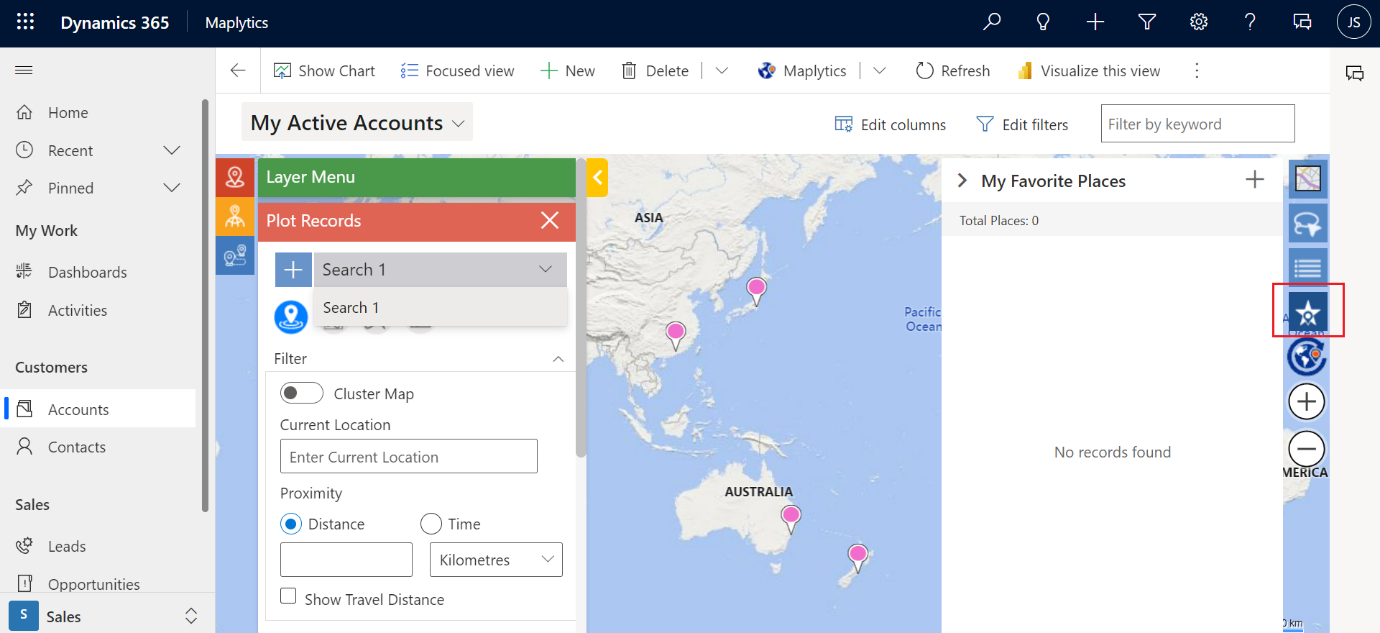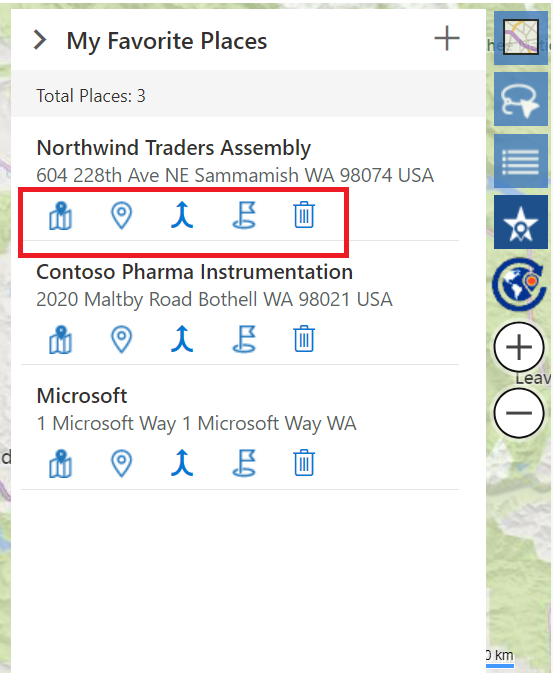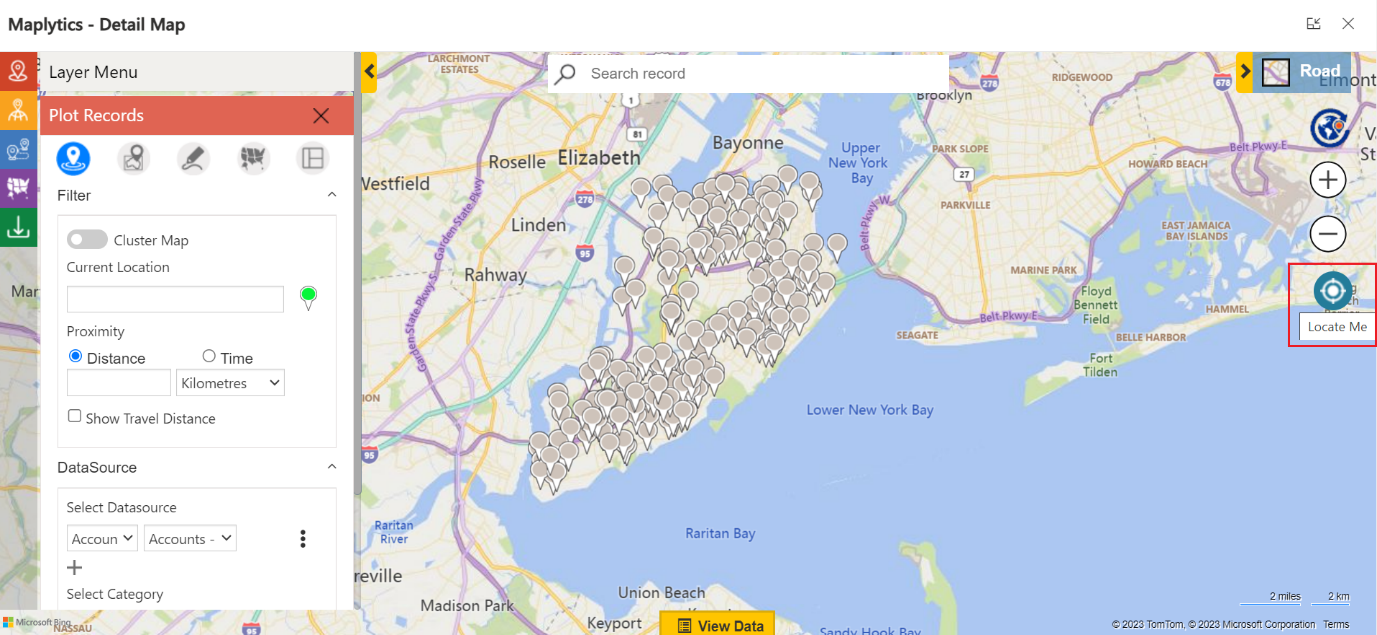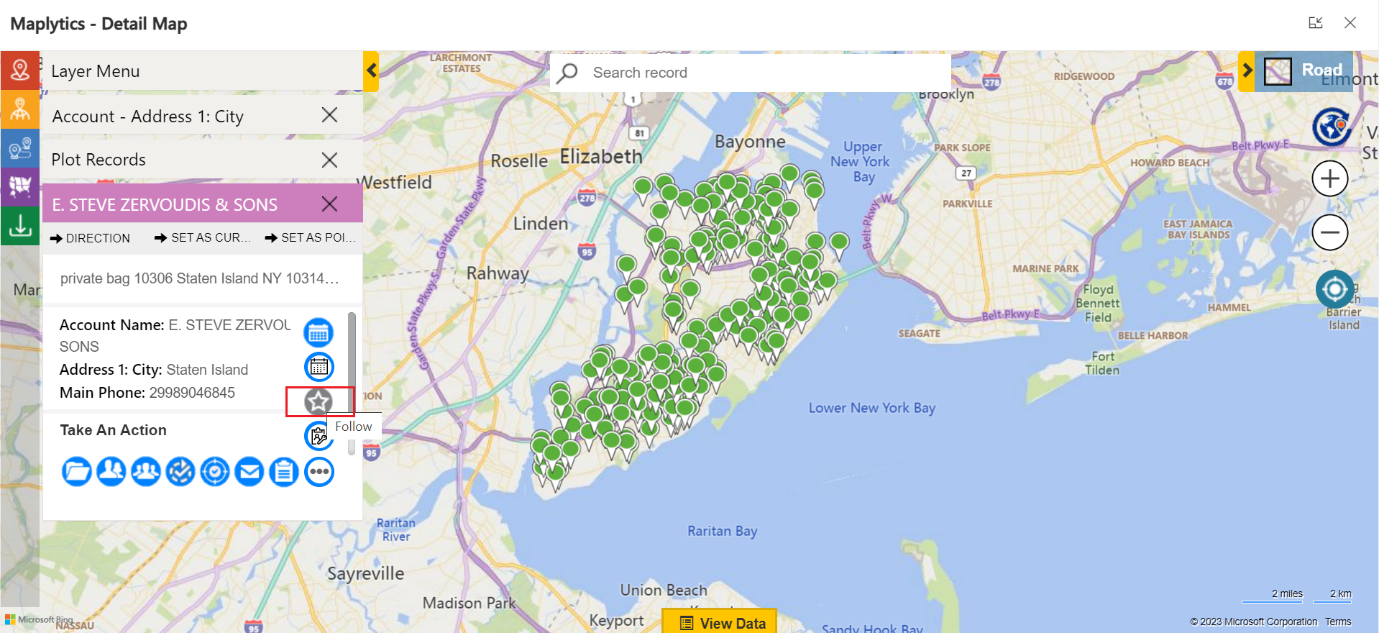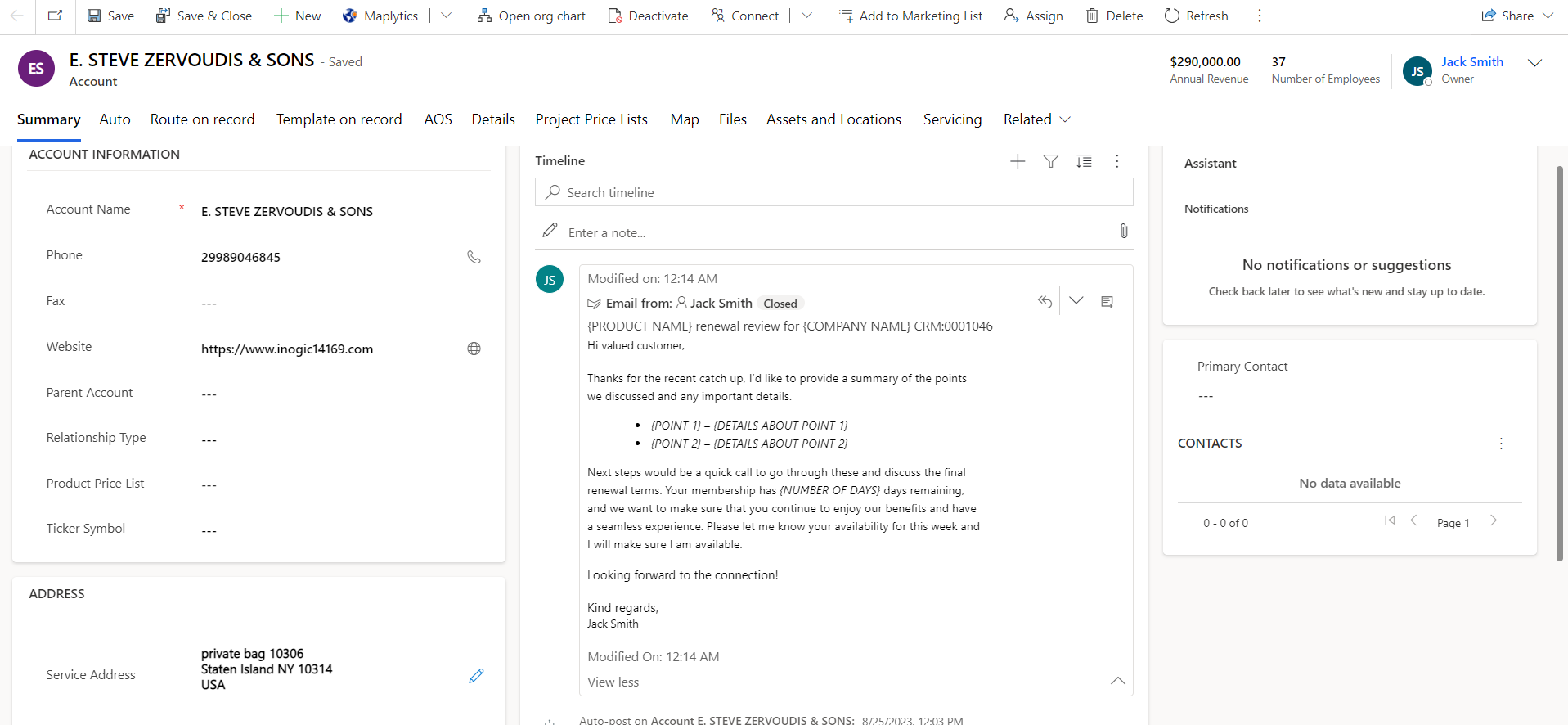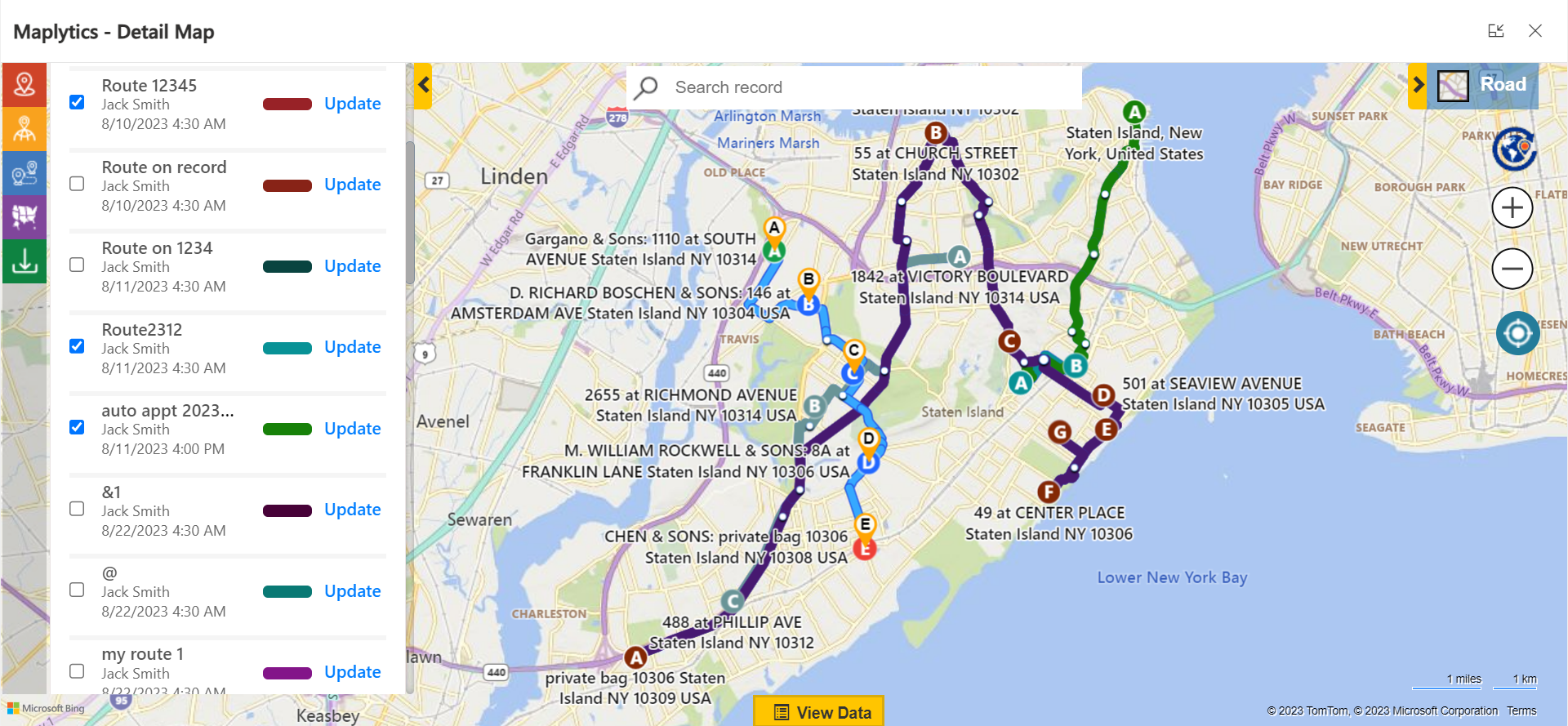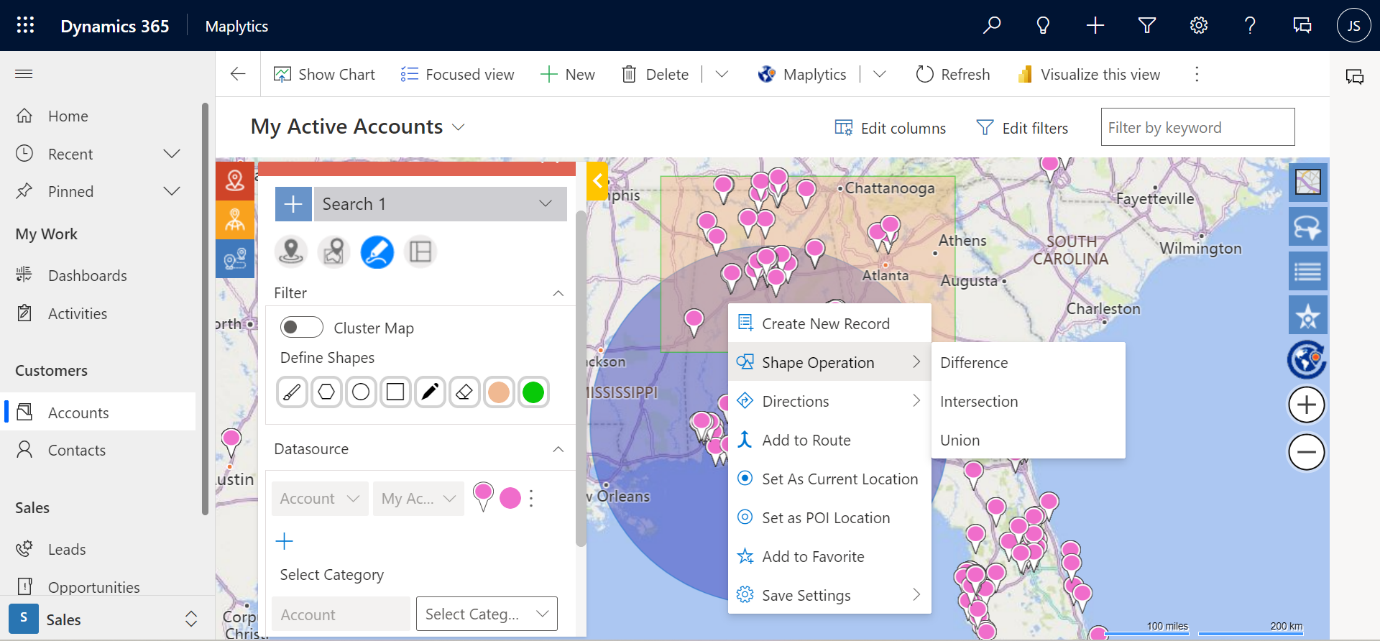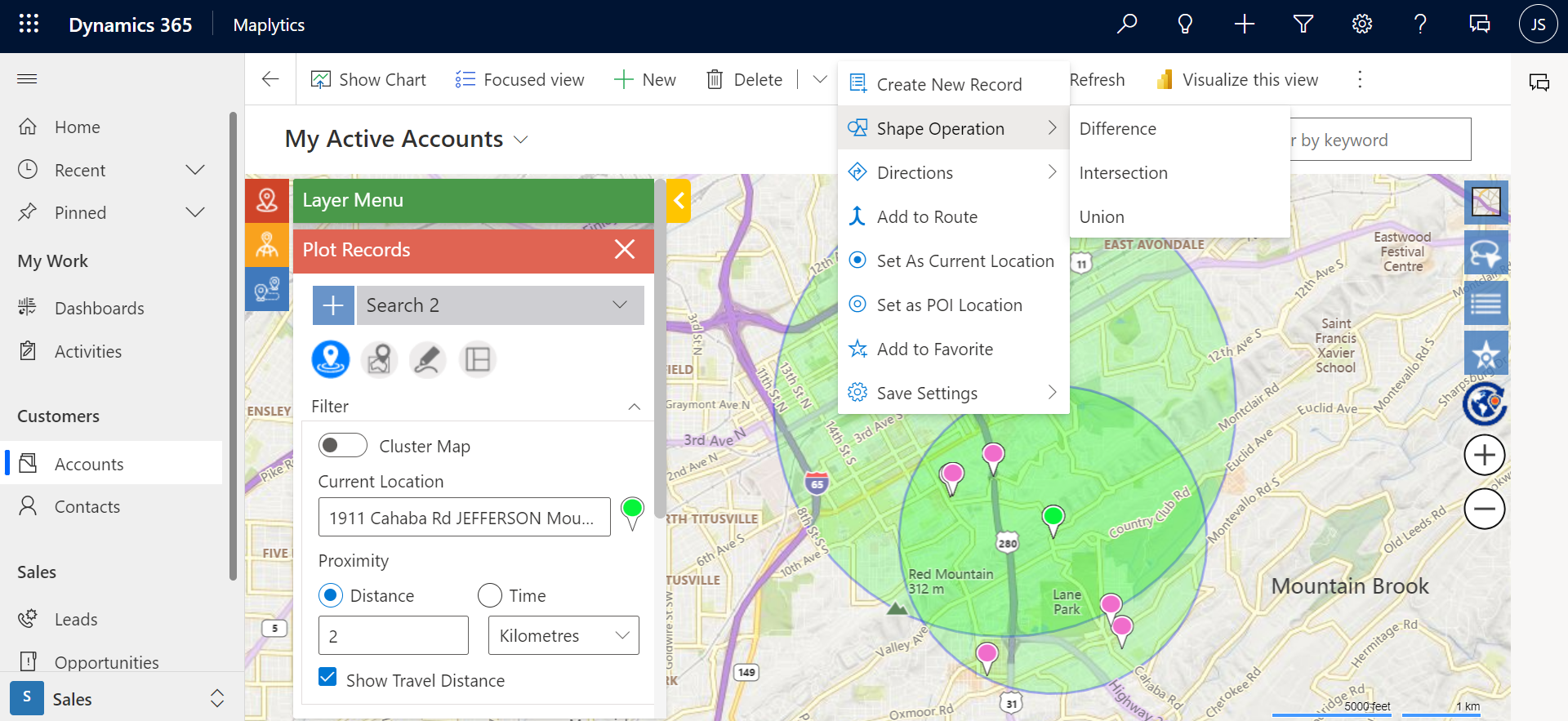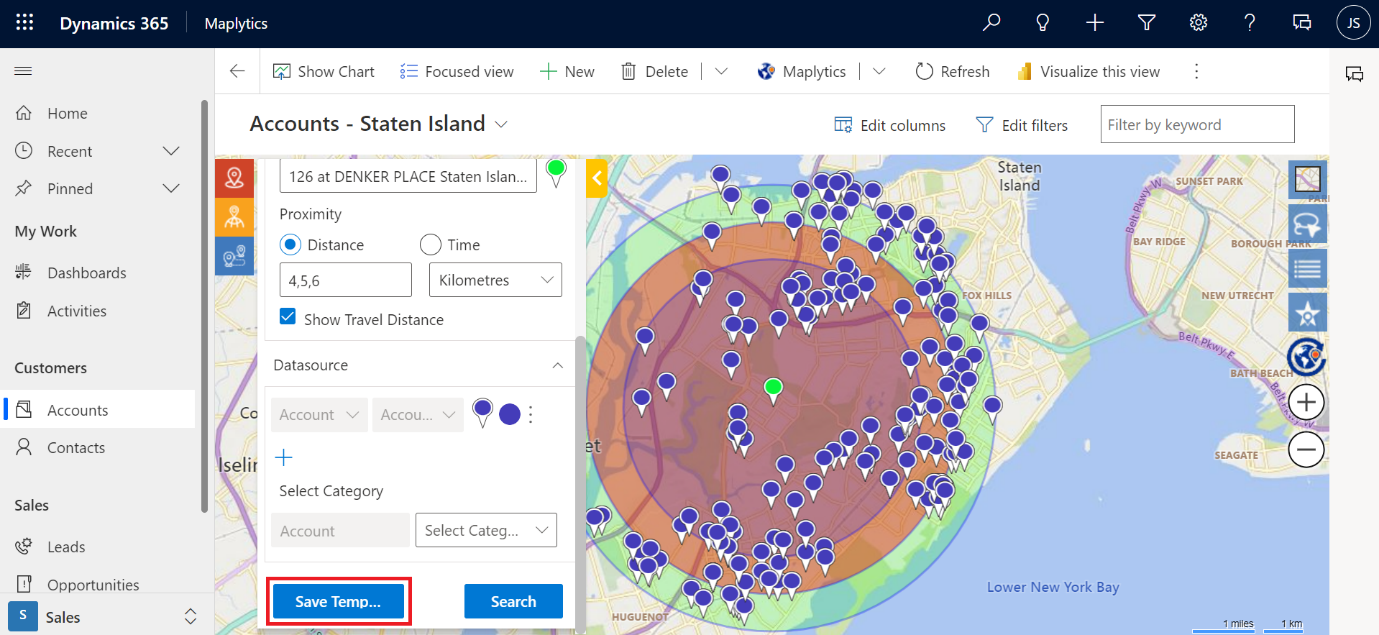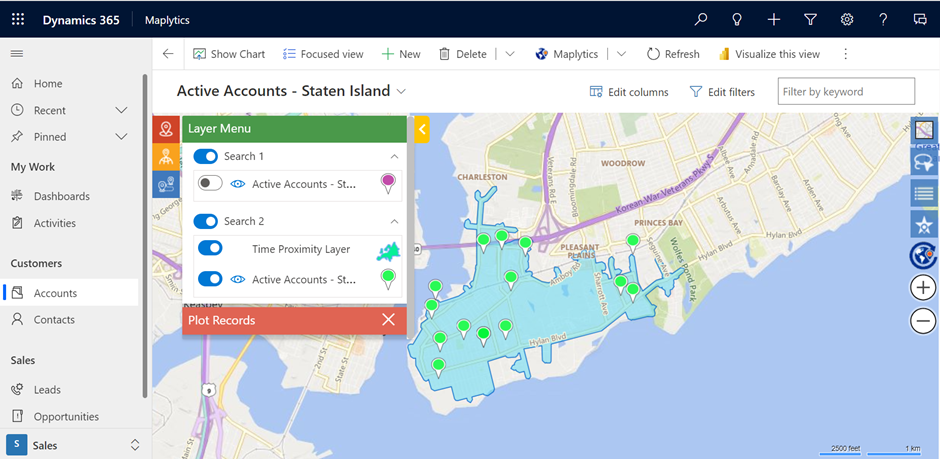
Two Maplytics enthusiasts, Lisa and Nina, were sitting in a café discussing the new features of the Fall 2023 Release.
“I understand you’re a fan of Maplytics,” Nina said, taking a sip of her coffee. “But I don’t understand why you’re so excited about this release. It’s just the Fall 2023 Release, like every year.”
“That’s true,” Lisa replied. “But I’m a salesperson in the pharma industry, and the Frequency Detail Feature of Auto Scheduling is designed just for me!”
Nina laughed. “You’re right,” she said. “That does sound like a useful feature for you. Let’s read the synopsis.”
Frequency Detail Feature
The Frequency Detail Feature of Auto Scheduling allows users to save and consider clients’ available working days and hours when scheduling appointments. This is an improvement over the traditional Auto Scheduling feature, which does not allow users to specify client availability.
For example, Jack, a sales manager at a pharma company, uses Maplytics to schedule weekly appointments for his sales reps. It is easy to schedule regular appointments with Auto Scheduling, but it can be challenging to schedule appointments for clients who are only available on certain days of the week or during specific time slots.
The Frequency Detail Feature can help in this situation. Jack can use this feature to schedule appointments for his sales reps according to clients’ availability at multiple locations.
A well-crafted appointment schedule that takes into account the frequency of appointments looks like this.
When two records are only available on Thursday, the appointment is automatically scheduled on Thursday within the client’s working hours.
Recursive Scheduling with Frequency Detail Feature
Some appointments need to be repeated multiple times each week or month. The Frequency Detail Feature allows users to save these frequency details and schedule recurring appointments accordingly, at the specified interval.
For example, Jack, a sales manager at a pharma company, needs to schedule weekly appointments for his sales reps. Some of Jack’s clients reorder their standard orders every 7 days, and some patients place orders every 10 days. Scheduling the same set of appointments every few days can be time-consuming for Jack, and sometimes patients fail to place their reorders, which can impact their treatments. Additionally, clients may have availability constraints for delivery.
Jack and other sales managers can use the Recursive Scheduling form within the Frequency Detail Feature to solve both of these problems. Jack can save the frequency details for his clients’ recurring orders and schedule appointments accordingly. This will save him time and ensure that his clients receive their medications on time.
“This is incredibly efficient and helpful,” Nina said. “You can reschedule appointments for every month, ensuring sales and reducing stress.” Lisa smiled and nodded.
“I also like the new additions to the Detail Map PCF control,” Nina added. “They seem so personal and useful.”
“Yes, let’s see what they’re all about,” Lisa said.
Smart Route
You can plot a route by clicking the “Add to Route” button for any record in the Detail Map Control data grid. These routes can be optimized for the shortest travel time or distance, and waypoints can be adjusted to change the route. Once you’ve created a route, you can save it with a name, owner, travel date, and other details.
You can schedule appointments and other activities at each waypoint on a route. For appointments, you can specify the subject, start date and time, end time, duration, buffer time between appointments, priority, and other details.
Once planned, the appointments can also be previewed for convenience.
Favorite Places
You can now add your frequently visited places to a list of favorites. This will make it easy to use these places for route plotting, as your current location, as a place of interest to search for other places nearby, and more.
You can perform actions on places in your favorites list, such as plotting them on the map, setting them as the origin or destination of a route, or deleting them from the list. These places will always appear first in the autosuggest list when you search for a POI location, current location, or other place.
Map My Current Location
You can use the “Locate Me” button in the PCF, Individual Record Map, and Detail Map to plot your current location on the map. The coordinates for this location will be saved in the address bar, so you can use them for other tasks.
Once you’re finished with the location, you can deactivate it in the CRM records.
Follow and Unfollow
When you click on a pushpin in the PCF or Detail Map, a tooltip card opens with actions that you can perform on the record. One of these actions is the ability to follow or unfollow the record. This action is available to both admins and users.
This way, the timeline lists all the activities performed on the record by users. This includes emails sent, contacts updated, and more. With these updates, admins and users can easily view and track activities performed on the record by any user, including themselves.
Multiple Routing
Multiple Routing allows users of the PCF and Detail Map to view multiple saved routes on the map at the same time. For example, Shawn, the manager of a five-person sales team, can create and save travel routes for each of his sales reps. Then, using Multiple Routing, he can view all five routes on the map at the same time.
Shape Operation in PCF
With the plot by-drawing feature, you can draw two or more shapes on the map. Then, you can perform three types of shape operations on the overlapping shapes: difference, intersection, and union. These operations are the same as the ones available in the Detail Map.
Advanced Shape Operations
This enhancement to shape operations in the PCF uses the Multi-Search feature to perform multiple search operations at the same time. For example, a user could perform a proximity search in two different search layers. Once the proximity circles and the records within them are plotted, the user can perform shape operations on them.
Search By Template
You can now use the “By Template” option in the PCF to plot data as needed. You can save search criteria using the “Save Template” option on the plot records card.
You can then use the “By Template” search option to plot saved templates in the future.
“I am excited to use the Drive Time Zone enhancement”, mentioned Nina. “What does it do?”, a
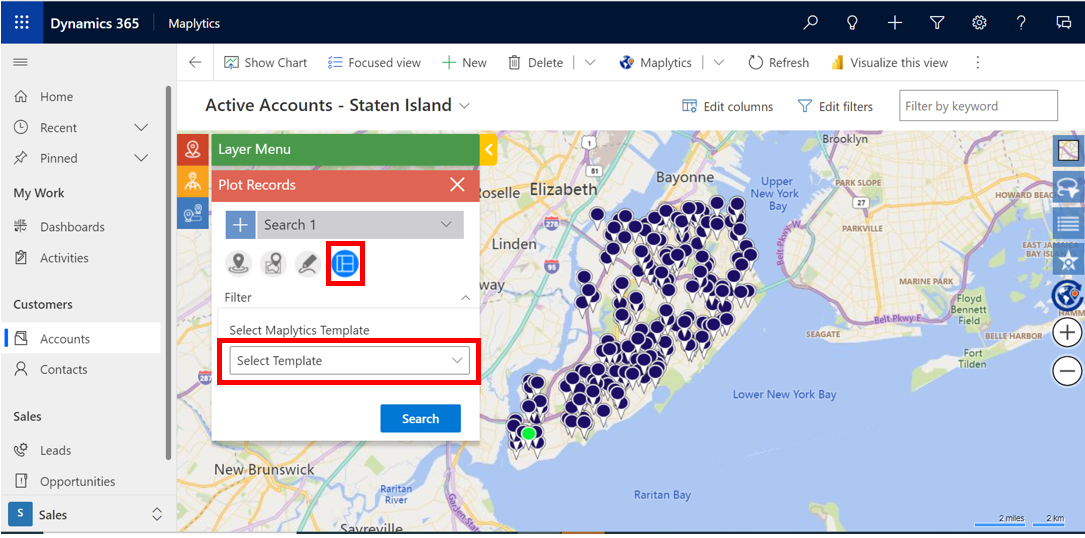
This is an enhancement to the Proximity Search by Time feature within Detail Map Control.
It allows you to visualize the regions of records that are within a certain travel time from a specific location. The time can be in minutes or hours.
For example, if you’re willing to travel for an hour around your current location, Drive Time Zone will show you the regions of all records that are within a one-hour drive.
A user with a Truck Routing license can enable the ‘Drive Time Zone’ option and view the boundaries of regions that lie within specific travel time.
“Apart from this, you know, even travel time and travel direction are added to the Driving Instruction Workflow”, Lisa said. “Sounds like a fun addition”, Nina agreed. “Let’s just get in our second coffee and try implementing all of this”, both agreed.
What’s More?
The unique features of Maplytics could be experienced when explored more with a trial. One can write to the Team at crm@inogic.com for mapping requirements, a free trial of 15 days, or a personalized demo within Microsoft Dynamics 365 CRM / Dataverse.
To learn more about Maplytics, its applications across industries, and another multitude of features, do visit the Website or the Microsoft AppSource. For further details, one can hop on to the Blogs, Client Testimonials, Success Stories, Industry Applications, and Video Library for a quick query resolution.
Until then,
Happy Fall 2023!
